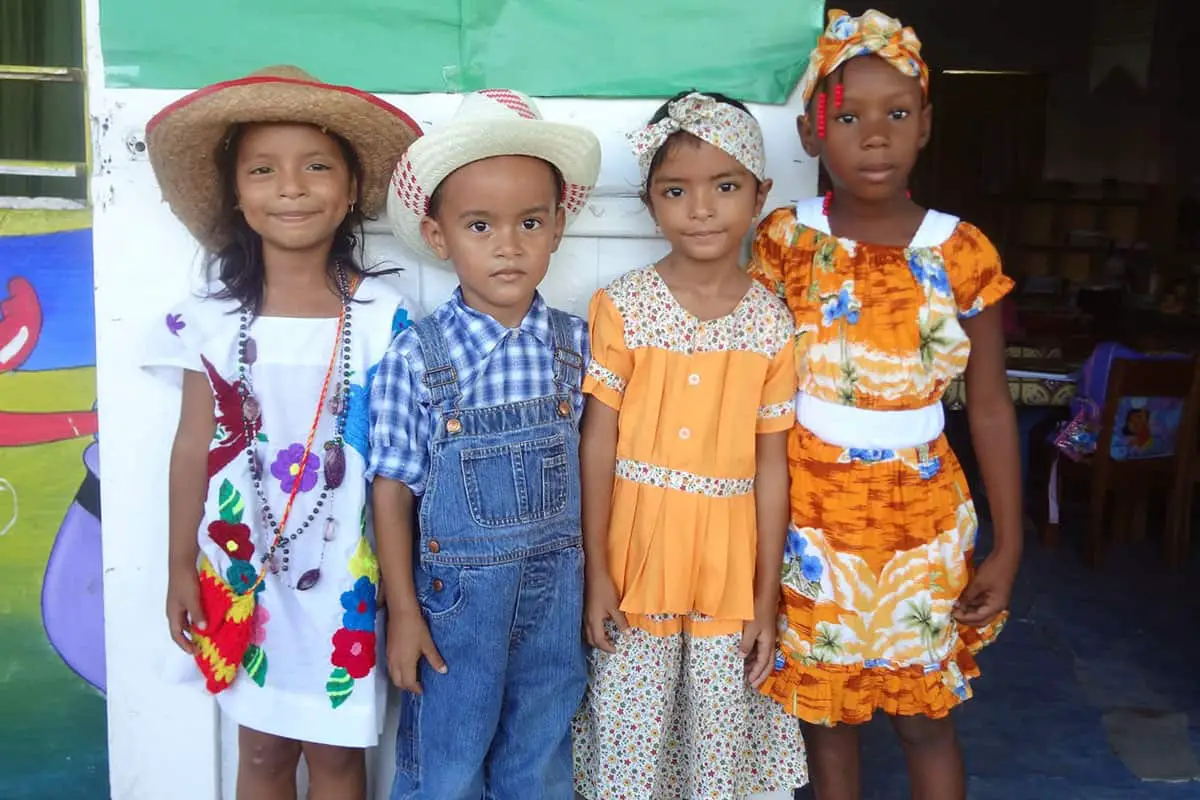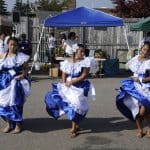The country of Belize has a long history of housing immigrants and refugees of all kinds from surrounding regions. Once a part of the Mayan empire, Belize now boasts a diverse and thriving population.
The Mestizo people in Belize are of mixed Maya and Spanish (Europeans) descent. They now make up a little more than fifty percent of the population of Belize and have kept their own distinct history, food, and traditional clothing intact.
The following paragraphs detail the journey and success of the Mestizo people in Belize. We hope you find the information provided helpful as you learn more about the history of Belize!
How the Mestizo Came to Belize
The Mestizo people came to Belize from the Yucatan region of Mexico in 1847. This sad year marked the beginning of the La Guerra de Castas (or The Caste War) between the oppressed peoples in the Yucatan and the Spanish colonizers. The war lasted fifty years and accounted for much Mestizo, Spanish, and Mayan bloodshed.
Many Mestizo fled the region to British-controlled Belize (then called British Honduras) to avoid the violent massacre, for the residents of the Yucatan had sworn to kill anyone of Spanish birth. This first wave of Mestizo people settled throughout Belize although they concentrated in the northern districts of Corozal and Orange Walk.
Since this first wave of refugees, many thousands more Mestizo have found their way to Belize from the tumultuous countries of Guatemala, El Salvador, and Honduras between the 1980s and the present day. These more recent Mestizo refugees mainly settled in and near the capital city of Belmopan.
Mestizo Food
The cultural Mestizo diet is a combination of Spanish, Mexican, and Mayan foods. The first Mestizos in Belize were (and many still are) sugar cane farmers, and that also influenced their cuisine.
Traditional Mestizo food from Mexico includes:
- Chimole
- Empanadas
- Relleno
- Escabeche
- Tamales (this is a Christmas tradition for the Mestizos)
- Corn tortillas

Mestizo Clothing
The modern Mestizos mainly wear traditional Western clothes. The historical garb of the Mestizo women is the huipil, a loose-fitting white tunic that is also common in Mexico. It is normally stitched with vibrant colors and ribbons, and it can be short and worn as a shirt or long enough to stretch past the knees.
These huipils are a perfect covering to wear in the heat and humidity of Central America. They can be made from wool or cotton and used for everyday or ceremonial occasions.
Headdresses and jewelry were also a big part of ancient Mestizo culture, coming from the Mayan traditions. Today, you can still buy traditional Mestizo jewelry in Belize, and popular examples include rings with precious stones or gold necklaces.
Mestizo Language
Mestizos in Belize mainly speak Spanish, though some are also fluent in English, Creole, or Mayan dialects.
The ancient influence of the Spanish caused the Mestizo people to abandon Mayan tongues. As the Mestizo blend with the Yucatan Maya in northern Belize, they commonly throw the Maya dialects to the wayside.
The Mestizo people are responsible for making Spanish the most-spoken language in Belize besides English. They love Spanish so much that even if they are multilingual, the Mestizos often prefer speaking Spanish above any other language.
Mestizo Beliefs and Folklore
The Mestizo people believe in a combination of Catholicism and ancient Mayan gods. We outline the specifics of some of their practices and folklore below.
Catholic Traditions
As implied above, the Mestizos celebrate Christmas, participate in baptism, and have a great reverence for Catholic marriage. Mestizos also take the Holy Sacraments and believe in life after death (though the belief is mixed with Mexican and Mayan traditions).
Mayan Traditions
Many Mestizo festivals and rituals are performed to please the ancient Mayan spirits and gods. There are religious rites to ask for things such as rain, animal safety, abundant crops, and human health.
These practices keep the ancient ways alive and distinguish the Mestizo from the other peoples around them.
Folklore: El Duende (Tata Duende)

The Mestizos believe that many mythical characters and creatures can be found in the forests and mountains. The dwarf El Duende guards the woods and plays tricks on humans, and even steals their thumbs if they wander into his territory.
The Mestizo people believe he was once an angel but was thrown from heaven and now makes mischief on Earth.
Folklore: La Llorona
La Llorona, the Weeping Woman, has a somber tale to tell. She was once the young and beautiful maiden Maria, who married a handsome man above her station. Once they had two children together, the husband forgot his love for Maria and only adored the children.
When Maria caught her husband cheating on her, she cast her children into a river to drown.
The fit of rage quickly passed when she realized what she had done, but it was too late to save her children. Maria’s ghost, known as La Llorona, can be seen weeping by rivers for the children she killed. Jealous of the happiness of others, La Llorona snatches children who go out at night and casts them in the river.
The Mestizo’s Role in Modern Belize
The Mestizos have played an essential role in the unification of the country since the 1900s. While intermarriage with the Mayas and the Creoles played an important role in solidifying their place in the country, Mestizos have also kept a firm grip on their own culture, so it is not forgotten.
Mestizos can be found thriving in nearly every branch of the Belizean economy, from sugar production and farming to business to fishing to professorship. The Mestizos are the most prominent people group in Belize and can work wherever they want. They have truly made themselves a beautiful life in Belize.
How Do the Cultures of Mestizo and Mennonite People in Belize Differ and Interact Today?
The cultures of Mestizo and Mennonite people in Belize differ vastly in their traditions, beliefs, and ways of life. While the Mestizo people have a rich Hispanic heritage and practice Catholicism, the Mennonite people of Belize are of European descent and adhere to a more conservative, Anabaptist way of life. Despite these differences, the two cultures do interact and coexist in modern-day Belize.
Conclusion
Though the Mestizo people came to Belize as the result of a brutal war, the people have found a good home and livelihood in the country.
They have blended well with the Creole and Mayans and have worked to unite Belize and spread good feelings among its inhabitants. Their culture is rich and well-remembered, and though they are open to new ideas, they will not completely abandon their ancient customs.





